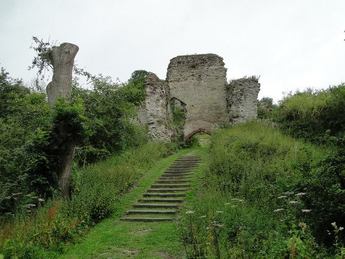For eight months following the Battle of Lewes Edward, heir to the English throne, was being held captive as a hostage by rebel leader Simon de Montfort. It was Roger Mortimer, deploying a plan of action created by his wife Maud, who rescued Edward enabling him to retake the rebel-held towns of Worcester and Gloucester.
Roger Mortimer would go on to assist Henry III in the final victory over barons in 1265 at the Battle of Evesham, it would be Mortimer who would strike the blow that ended the life of the aforementioned Simon de Montfort.
"To dam Maud the Mortimer that wel foule it ssende."
It is alleged that Lady Mortimer held feast that evening to celebrate Henry's victory and that she had Simon de Montfort's head, still attached to the point of the lance, placed on show for all to see.
Roger Mortimer would survive the years that saw the Statute of Marlborough passed and the signing of the Dictum of Kenilworth. Mortimer would also witness Henry III passing many of Simon de Montfort's ideas and changes to government although what he thought of it all goe's unrecorded.
Roger Mortimer died on this day in 1282 at the age of fifty-one. His death, it has been said, was seen by many as a major setback in the early years of Edward I's reign.
Mortimers epitaph reads:
"Here lies buried, glittering with praise, Roger the pure, Roger Mortimer the second, called Lord of Wigmore by those who held him dear. While he lived all Wales feared his power and given as a gift to him all Wales remained his. It knew his campaigns, he subjected it to torment."










 RSS Feed
RSS Feed
